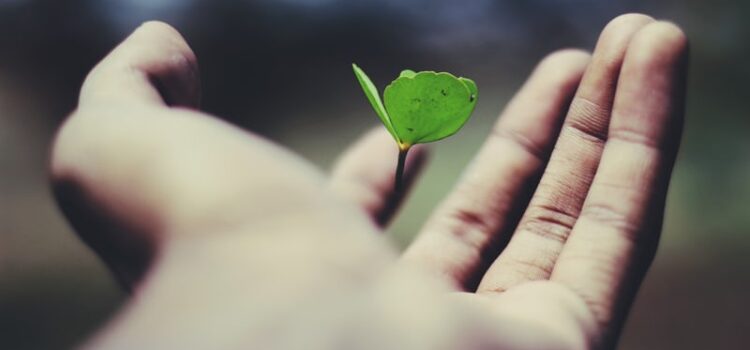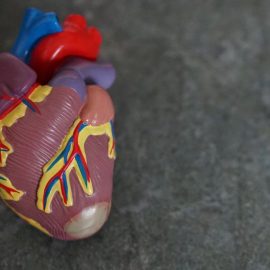

This article is an excerpt from the Shortform book guide to "Braiding Sweetgrass" by Robin Wall Kimmerer. Shortform has the world's best summaries and analyses of books you should be reading.
Like this article? Sign up for a free trial here.
What are some life lessons from plants? What can plants teach us about mutual care?
In Braiding Sweetgrass, Robin Wall Kimmerer shows us how the relationships between plants help individuals and communities flourish. Plants engage cooperatively, which can inspire us to practice mutual care with other humans as well as non-human beings.
Let’s look at the many life lessons plants teach us about care and respect.
1. Symbiotic Relationships
One of the first life lessons from plants is about symbiotic relationships. Plants often have symbiotic relationships in which different species work together in a way that benefits both of them.
Kimmerer illustrates this principle with the example of a lichen. A lichen is an organism composed of fungi and algae. The fungi decompose organic matter to nourish the lichen with water and minerals. They also hold in moisture and protect the lichen from the sun. The algae provide food for the lichen by photosynthesizing sunlight into sugar.
Because of their differences in feeding strategies, the decomposers (fungi) and producers (algae) can cooperate to meet their basic needs. Similarly, humans can interact with other organisms in a mutually positive way.
(Shortform note: How does the concept of symbiosis apply to humans? In Range, David Epstein describes how creating diverse teams in organizations makes them more likely to come up with novel ideas because of members’ different backgrounds and experiences. Just as different natural organisms encourage each other’s growth through symbiosis, the interactions between different kinds of people help both the individuals and the group succeed.)
2. Collective Solidarity
In addition to the symbiosis between different species, collective solidarity within a species is another way that plants demonstrate mutual care. When plants exhibit collective solidarity, they act in a unified way that helps the whole group survive.
The author describes how pecan trees demonstrate collective solidarity when they participate in “mast (or synchronous) fruiting”: All of the pecan trees in a region produce a heavy crop of nuts in the same year to overwhelm seed predators (such as squirrels) and increase the trees’ chance of reproducing via seed. In this process:
- A massive quantity of pecans in one season causes a spike in the squirrel population.
- The large squirrel population drives an increase in the number of predators that feed on squirrels.
- The pecan trees all stop producing nuts at the same time that the predator population is high, causing the squirrel population to plummet.
- The pecan trees mast fruit again when the squirrel population is at a low point, increasing the chance of their seeds taking root.
The strategy of mast fruiting works because all of the pecan trees in a region participate regardless of their microclimate or individual resources.
Kimmerer relates this principle to the human world with an example of failed collective solidarity. The federal government offered the Anishinaabe people (who had been displaced multiple times) citizenship and legal protection for their land if they agreed to relocate again and convert their communally owned territory into small plots, privately owned by individual families.
The Anishinaabe eventually agreed, and the process of fracturing their common land ultimately made each family more economically vulnerable. Many lost their land due to the tax burden or predatory purchasing tactics. Over two-thirds of their total Indigenous land was eventually lost. Kimmerer suggests that if her people had been able to retain their community structure, they would have been more resilient long term.
(Shortform note: The ongoing Landback movement to reclaim Indigenous land incorporates the strategy of collective solidarity by strengthening connections among organizations to work toward their common goal. To date, there have been some successful cases of reclaiming Anishinaabe territory (not limited to the individual plots described in this example) that was stolen during colonization. These include a cemetery near Lake Superior and forested land returned to the Leech Lake Band of Ojibwe in Minnesota.)
3. Natural Succession
Another life lesson from plants is the process of natural succession. Kimmerer explains that in natural succession, plants and animals act sequentially to restore an ecosystem after a disturbance, such as clear-cutting a forest, pollution from toxic chemicals, or a natural disaster. Each species creates the conditions for a new species to thrive, and the overall health of the ecosystem is restored over time.
For example, in a landslide, organic matter and vegetation disappear suddenly, making it difficult for plants or animals to survive. However, life is restored through the following stages of natural succession:
First, hardy pioneer species like moss come up from residual seeds or roots, or seeds blown in by the wind. These plants can survive in exposed areas and protect the soil from erosion. Then, the ground cover from the early pioneer species enables weedy plants and grasses to take root, creating more diversity and organic mass. Next, larger plants grow up and optimize sunlight and nutrients with their spacing. When shrubs and trees appear, they provide birds and other animals with habitat and food, bringing more seeds (through droppings), more biodiversity, and a stable ecosystem.
4. Generosity and Cyclical Gifting
The last characteristic of plants that teaches mutual care is generosity and cyclical gifting. Kimmerer describes how plants act generously by providing many resources that meet the basic needs of other plants, animals, and people. In ecological systems, those gifts are continually replenished and recycled because they are interdependent with other species.
An example of a “generous” plant is the coconut tree. It provides leaves to build roofs and weave baskets, a habitat for birds and bats, fiber from the coconut shell (useful in horticulture and for heating fuel), hydrating coconut water, coconut oil, shade, and food for humans and animals. These gifts cycle back to the plant when it is fertilized by the manure of animals that interact with it, when the leftover materials decompose and provide nutrients to the tree, or when humans spread the seeds to help it reproduce (the coconut itself is the seed).
In human communities, gift-giving encourages mutual care because when someone cooks a meal for us or gives a thoughtful gift, it makes us want to give back to the other person.
(Shortform note: In Influence, Robert C. Cialdini distinguishes between gifts that are given as a genuine favor versus gifts that are used to manipulate someone. He describes cyclical gifting in the human community as the Reciprocity Principle, which explains how gifts are used to manipulate people into making concessions or buying a product. For example, if you give someone a free sample of a product, they feel socially obligated to listen to your sales pitch or buy something. In contrast to the simpler gifts of the plant world, human gifts given out of obligation contradict Kimmerer’s concept of mutual care because one party may feel resentful about the transaction.)

———End of Preview———
Like what you just read? Read the rest of the world's best book summary and analysis of Robin Wall Kimmerer's "Braiding Sweetgrass" at Shortform.
Here's what you'll find in our full Braiding Sweetgrass summary:
- What plants, Indigenous worldviews, and science can teach us about restoring balance
- Why we must recognize our interdependence on others and the environment
- Strategies to help you practice mutual care in your own life






